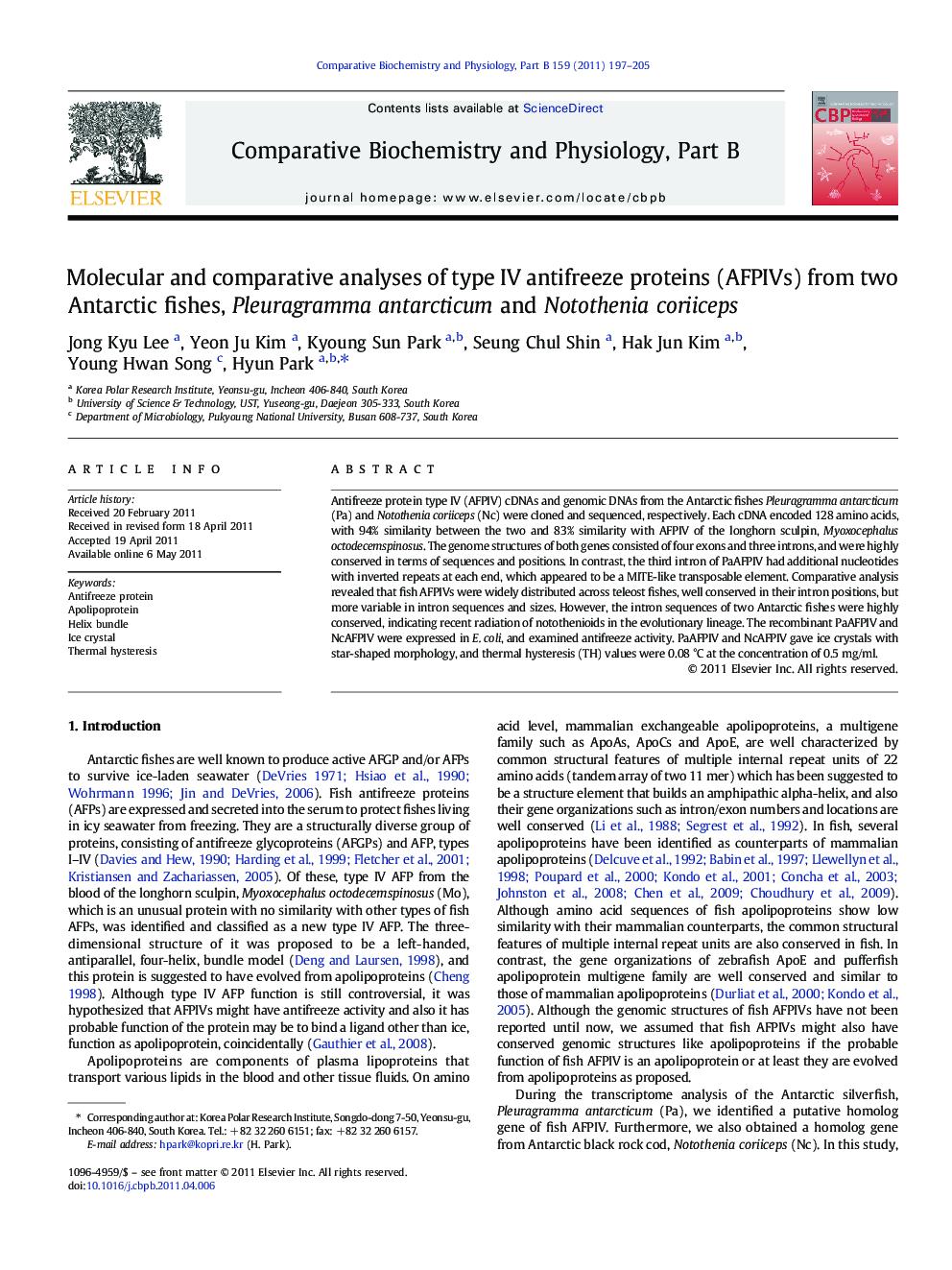| Article ID | Journal | Published Year | Pages | File Type |
|---|---|---|---|---|
| 1975606 | Comparative Biochemistry and Physiology Part B: Biochemistry and Molecular Biology | 2011 | 9 Pages |
Antifreeze protein type IV (AFPIV) cDNAs and genomic DNAs from the Antarctic fishes Pleuragramma antarcticum (Pa) and Notothenia coriiceps (Nc) were cloned and sequenced, respectively. Each cDNA encoded 128 amino acids, with 94% similarity between the two and 83% similarity with AFPIV of the longhorn sculpin, Myoxocephalus octodecemspinosus. The genome structures of both genes consisted of four exons and three introns, and were highly conserved in terms of sequences and positions. In contrast, the third intron of PaAFPIV had additional nucleotides with inverted repeats at each end, which appeared to be a MITE-like transposable element. Comparative analysis revealed that fish AFPIVs were widely distributed across teleost fishes, well conserved in their intron positions, but more variable in intron sequences and sizes. However, the intron sequences of two Antarctic fishes were highly conserved, indicating recent radiation of notothenioids in the evolutionary lineage. The recombinant PaAFPIV and NcAFPIV were expressed in E. coli, and examined antifreeze activity. PaAFPIV and NcAFPIV gave ice crystals with star-shaped morphology, and thermal hysteresis (TH) values were 0.08 °C at the concentration of 0.5 mg/ml.
